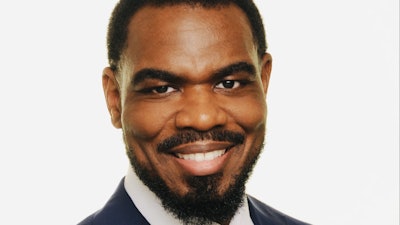I was at a conference, and the attendees were workshopping solutions for increasing digital learning capacity at their respective institutions. The conference attendees were a mix of students, faculty, donors, education administrators, and edtech professionals. Groups were assigned an activity to discuss possible solutions for increasing capacity for educational technology and digital learning. It is important to note that during panels prior to this activity, there was significant feedback from the various attendees. Most notably, the students [learners] expressed levels of dissatisfaction with their recent educational experiences. The dissatisfaction conveyed in this context was mostly due to the ability [or inability] of their instructors to employ educational technology effectively in their courses, ultimately resulting in negative experiences for the students.
 Dr. Morris Thomas
Dr. Morris Thomas
Participants from other groups echoed the same sentiment. However, one participant had an intense reaction to our suggestion. This participant stood and gave a very lengthy, impassioned rebuttal filled with palpable emotions of anger and frustration, despite the feedback from almost all the students who had previously spoken. It would be imbalanced and naïve to think this person was alone; there were several faculty colleagues who shared the participant’s views. The visceral response from this faculty participant captivated me; in this moment, I knew there was definitely “a missing piece [peace].” While I empathized with the participant, their response did not offer a solution for the students’ feedback and the larger issue facing higher education.
Higher education as a whole has recently been scrutinized for its value. Thus, it would seem more than appropriate, at minimum, to assess and examine our current practices, including who performs one of our most essential functions [instruction].
Historically, those hired to teach at the university level complete the required studies in a given discipline. In many instances, these individuals might not have had any training in the science and/or practice of teaching and learning. It is fair to say that all education in the 21st century includes technology in some form. Therefore, it is appropriate that consideration be given for an educator’s aptitude to use technological tools in learning environments.
How does one effectively build a learning environment when there is only deep understanding of the materials and not the tools needed to create an environment and experiences that foster learning? To further investigate this matter, I looked at position descriptions for faculty. These positions were on a popular public instructor/faculty recruitment list that included 12 disciplines: agriculture, business, communications, education, fine and applied arts, engineering, health sciences, law and legal studies, liberal arts, medicine, science, and technical and career. From the aforementioned disciplines, 667 positions were reviewed. Only 7% of the position descriptions included a mention of educational technology/digital learning in the criteria. Another 29% of the position descriptions contained criteria that referenced online learning, which has increased in visibility and acceptance since the COVID-19 pandemic. However, neither educational technology nor online learning was mentioned in the criteria for 64% of the positions.
In higher education, being adept in the usage of educational technology has not generally been a prerequisite for the instructional workforce. These practices have passed from one generation to the next. However, as times have changed, so has the landscape of higher education. As previously mentioned, higher education’s value and quality are being scrutinized, and our learners are raising their voices.
I think it is prudent to pay attention to their voices, especially with rapid tech advances and the rise of artificial intelligence. This situation makes me think about Albert Einstein’s quote, “Insanity is doing the same thing over and over again and expecting different results.” Therefore, it is my hope that we will not ignore the voices of our learners, continuing with business as usual until external forces intervene for us to take steps to address what is seemingly “a missing piece [peace].” Let’s listen to our learners, not ignore our critics, and respond in practical ways to the educational technology demands. We can do things like engage our colleagues within our institutions who are well equipped to facilitate learning using digital learning tools. We can also partner with our colleagues in centers for teaching and learning and/or academic technology units for training, resources, and guidance; and for any new members of our instructional communities, let’s proactively consider their capacity to provide a 21st century educational experience. It is imperative that we place more effort, emphasis, and energy on the reason why and how we are all able to do the work we love: our learners.
Dr. Morris Thomas is assistant provost for digital and online learning and director of the Center for Excellence in Teaching, Learning, & Assessment (CETLA) at Howard University.
















